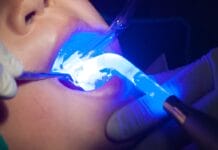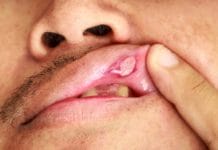Despite the decline in tobacco smoking rates, it remains the cause of over seven million deaths globally each year. As an alternative, manufacturers have introduced a variety of non-combustible nicotine products, including e-cigarettes, dissolvable tobacco products, and nicotine pouches. These products frequently come in various flavors, increasing their appeal to adolescents.1
Nicotine pouches have rapidly gained popularity, with sales rates climbing from 600,000 units when introduced in the United States in 2016 to 46 million units in the first half of 2020.1
Although nicotine pouches contain no tobacco leaf, concerns exist regarding the potential presence of tobacco-specific nitrosamines (TSNAs), such as nitrosonornicotine (NNN), N-nitrosoanatabine (NAT), N-nitrosoanabasine (NAB), and 4-(methyl nitrosamino)-1-(3-pyridyl)-1-butanone (NNK). Exposure to these substances, particularly NNN, is considered a risk factor for oropharyngeal carcinoma.1 Further concerns involve the detection of compounds such as formaldehyde, ammonia, chromium, and nickel.2,3
Flavoring agents, such as menthol, can potentially increase the absorption of NNN and nicotine, increasing health risk concerns regarding the use of nicotine pouches.1
Only a few studies have evaluated the safety and efficacy of smoking cessation with these products. However, studies have reported oral lesions associated with other smokeless tobacco products, which have found higher levels of proinflammatory cytokines. Additionally, previous studies indicated that nicotine can directly or indirectly affect periodontal tissue, including increased bone loss through miRNA mechanisms.1
Though nicotine pouches are often marketed as a potentially safer alternative to tobacco smoking and other forms of smokeless tobacco, current evidence is insufficient to recommend their use. This lack of evidence is concerning as the popularity of nicotine pouches increases, especially among adolescents.1
A systematic review assessed the currently published evidence to provide insights into the potential oral health implications of nicotine pouch use.1
The Study
Four electronic databases were searched through February 2024 using terms focusing on two main topics: nicotine pouch use and oral health outcomes. Only cross-sectional, case-control, cohort, and trial studies in humans were considered. There was no restriction on population or age.1
A total of 1,258 articles were identified using the search terms. After applying exclusion criteria, 1,252 articles were deemed irrelevant. Of the remaining six articles, three were excluded due to irrelevant exposure or outcomes, leaving three articles published between 2022 and 2024 included in the systematic review.1
It was determined that all three studies included had a high risk of bias. Biases and limitations that were identified included selection of participants, confounding, missing data, unclear selection of reported results, measurements of exposure, and a failure to report sample size calculations. Further, none of the included studies had a sample size of over 400, and only one included study represented the general population with a response rate of over 95%.1
Among the included studies, two were cross-sectional, and one was a prospective experimental study with 190 participants included across all three studies. All participants were over age 18, with one study setting the maximum age for participation at 35 years of age.1
The exclusion criteria in the studies included systemic medication usage, systemic disease, and medical conditions such as allergies to composite materials, hypertension, cardiovascular disease, or any other medical condition that would affect nicotine metabolism. Pregnant participants and those who had undergone surgery or used antibiotics within four weeks to six months before the study were excluded. One study had restrictions that prohibited participants from cleaning interproximally for 72 hours, toothbrushing for 48 hours, and abstaining from eating and drinking for two hours before visits for evaluation.1
The Results
Only one of the included studies reported motivations associated with nicotine pouch use. The most common motivation for the use of nicotine pouches was “it comes in flavors I like.” Other factors that played a role in the decision to use nicotine pouches included nicotine levels and the brand of the product. This study also determined that there was a significant dependency among participants who used nicotine pouches.1
Regarding usage patterns, the average duration of use was about 11 minutes. Preferred placement varied between the lower lip and the gingiva and the upper lip and the gingiva. The number of units used also varied between one and five units per session in one study and five to 10 units per day in another.1
One included study compared lesion appearance when participants used Swedish snus versus nicotine pouches. This study found that 90% of participants had a pre-existing white mucosal lesion at the site where the Swedish snus was placed. When participants replaced Swedish snus with nicotine pouches, the prevalence decreased to 70%. Lesions were measured using a 4-degree scale, with a higher degree associated with more severe lesions. The number of participants with 3- and 4-degree lesions decreased, while those with 0- and 1-degree lesions increased. However, it is important to note that this study did not have a control group.1
Another study found that nine out of twelve participants using Swedish snus or nicotine pouches had white lesions described as grainy, round, leathery, and/or linear. This study also found that the oral lesions were associated with the duration of product use per year and the number of units used. Participants who used tobacco products for five to 10 years or used five to 10 tobacco units per day had an increased incidence of mucosal changes.1
One study documented decayed, missing, filled teeth (DMFT) scores at baseline but did not re-evaluate these scores at any other time during the study. However, gingival recession was tracked in this study, which found no changes during the study period.1
The most frequent oral adverse effects reported by participants were mouth lesions (48%), sore mouth (37%), and strange jaw sensation (1%).1
Salivary biomarkers were measured in one study. Biomarkers measured included interleukin (IL)-1, IL-6, IL-8, tumor necrosis factor-alpha (TNF-alpha), and leucine-rich alpha-2-glycoprotein 1(LRG1). Salivary inflammatory biomarkers were higher in participants who used Swedish snus and nicotine pouches when compared to those using cigarettes, e-cigarettes, and the control group. Interestingly, it was determined that only IL-6 levels correlated with nicotine product types and oral mucosal changes.1
This systematic review had several limitations, including data availability, study quality, and participant and outcome heterogeneity.1
Conclusion
This systematic review provides limited evidence of the effects of nicotine pouches on oral health outcomes due to the low number of studies and the high risk of bias.1
The results of the studies included in this systematic review should be interpreted with caution. One study did not have a control group, which seriously limits the information gathered. Another study combined Swedish snus and non-tobacco users, hampering the ability to identify oral mucosal changes between the groups. The third used self-reported data on oral lesions rather than clinically evaluating participants. This study also recruited participants from online forums, which could lead to selection bias.1
Individual usage patterns, such as nicotine concentration, number of pouches used, duration, and frequency, influence the release of nicotine in nicotine pouches. As a result, assessing these variables is essential when evaluating the effects on oral health outcomes.1
For these reasons, none of the included studies could definitively determine the oral health outcomes of participants who used nicotine pouches. However, the presence of oral lesions with elevated inflammatory biomarkers suggests that nicotine pouches increase the risk of oral cancer.1
The use of nicotine pouches is concerning because their placement allows more frequent and more prolonged use than other tobacco or nicotine-containing products, and nicotine pouches have a high nicotine content, which is absorbed through the oral mucosa.1
Although nicotine pouches may be considered more satisfying than traditional nicotine replacement therapies such as lozenges and gum, research suggests that their ability to relieve cravings might not facilitate tobacco cessation and could lead to misuse due to higher plasma nicotine delivery compared to traditional cigarettes. The high and varied levels of nicotine could potentially encourage users to move towards products with progressively greater nicotine strengths, which could lead to higher rates of addiction and dependency.1
While the reported toxicant levels in nicotine pouches are lower than in Swedish snus and other tobacco products, studies suggest that specific flavorings and additive compounds in nicotine pouches might elicit toxicological responses with chronic use. Further, many of the products contained nicotine levels higher than stated on the label. Some products had nicotine levels as high as 50 mg per pouch. Elevated nicotine levels can contribute to adverse systemic health outcomes such as cardiovascular damage.1
The anticipated growing popularity of nicotine pouches based on flavor options and their discreet nature heightens concern regarding adverse health outcomes.1
Due to the properties of tobacco products used in earlier studies, research into the direct impact of nicotine on oral health outcomes has been limited. However, several animal and in vitro studies have determined that nicotine promotes gingivitis, periodontitis, and bone destruction. Increased nicotine levels were also associated with higher S. mutans and caries rates in animal studies. Findings from these studies support the potential for oral adverse effects of nicotine pouch users.1
This systematic review highlights the gap in knowledge regarding oral health outcomes and the use of nicotine pouches. Further well-conducted, robust studies are needed to better understand the potential misuse and heightened risks of oral health adverse outcomes associated with nicotine pouch use.1
Within the limitations of this systematic review, nicotine pouches may affect oral mucosa and gingival health. The potential of malignant oral lesions associated with nicotine pouch use is a concern. Further studies on the short and long-term effects of nicotine pouch use on oral health are needed.1
Before you leave, check out the Today’s RDH self-study CE courses. All courses are peer-reviewed and non-sponsored to focus solely on high-quality education. Click here now.
Listen to the Today’s RDH Dental Hygiene Podcast Below:
References
- Rungraungrayabkul, D., Gaewkhiew, P., Vichayanrat, T., et al. What Is the Impact of Nicotine Pouches on Oral Health: A Systematic Review. BMC Oral Health. 2024; 24(1): 889. https://pmc.ncbi.nlm.nih.gov/articles/PMC11297755/
- Back, S., Masser, A.E., Rutqvist, L.E., Lindholm, J. Harmful and Potentially Harmful Constituents (HPHCs) in Two Novel Nicotine Pouch Products in Comparison with Regular Smokeless Tobacco Products and Pharmaceutical Nicotine Replacement Therapy Products (NRTs). BMC Chem. 2023; 17(1): 9. https://pmc.ncbi.nlm.nih.gov/articles/PMC9985244/
- Emerging Commercial Tobacco and Nicotine Products. (2025, February 20). American Lung Association. https://www.lung.org/quit-smoking/smoking-facts/health-effects/emerging-products










